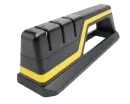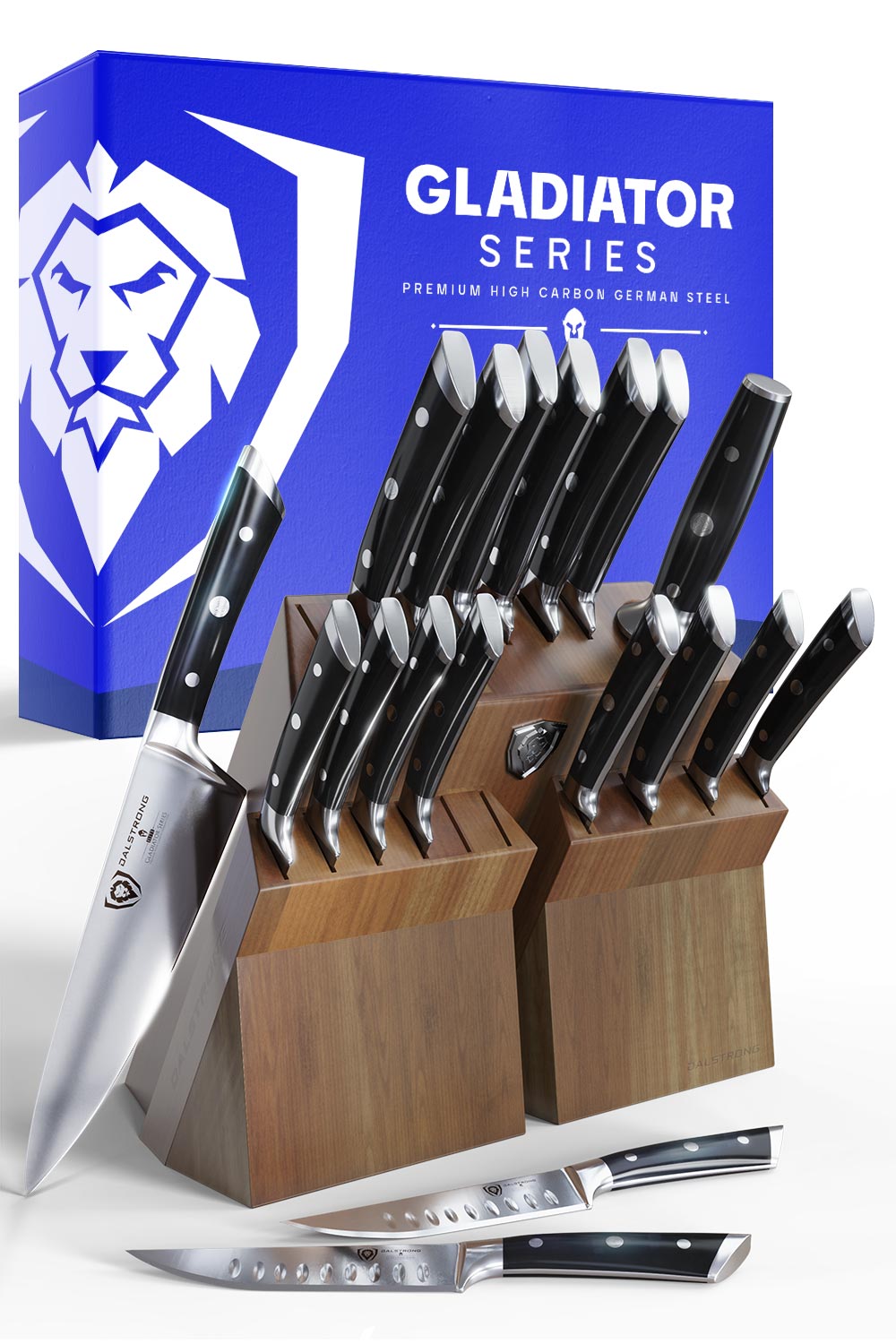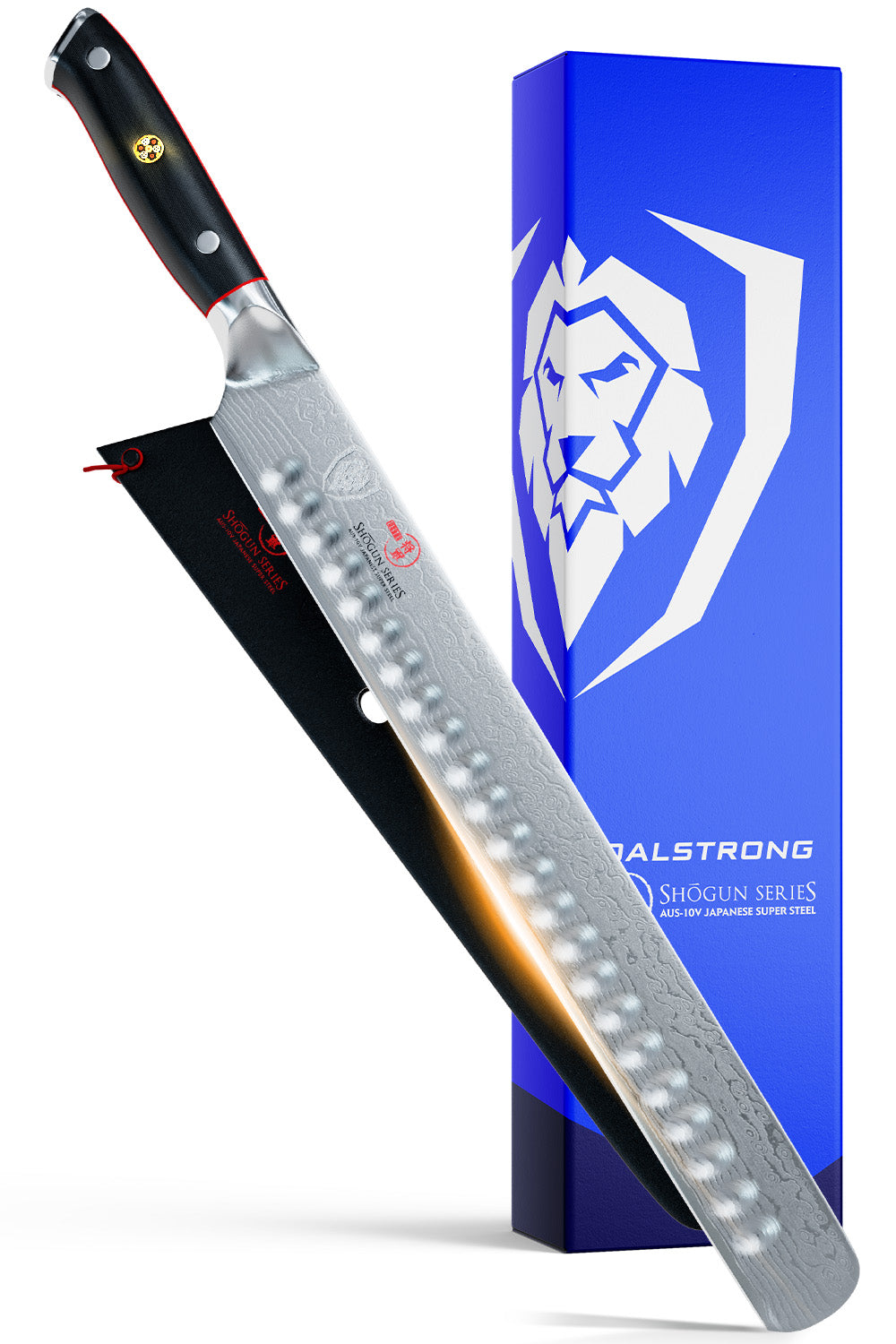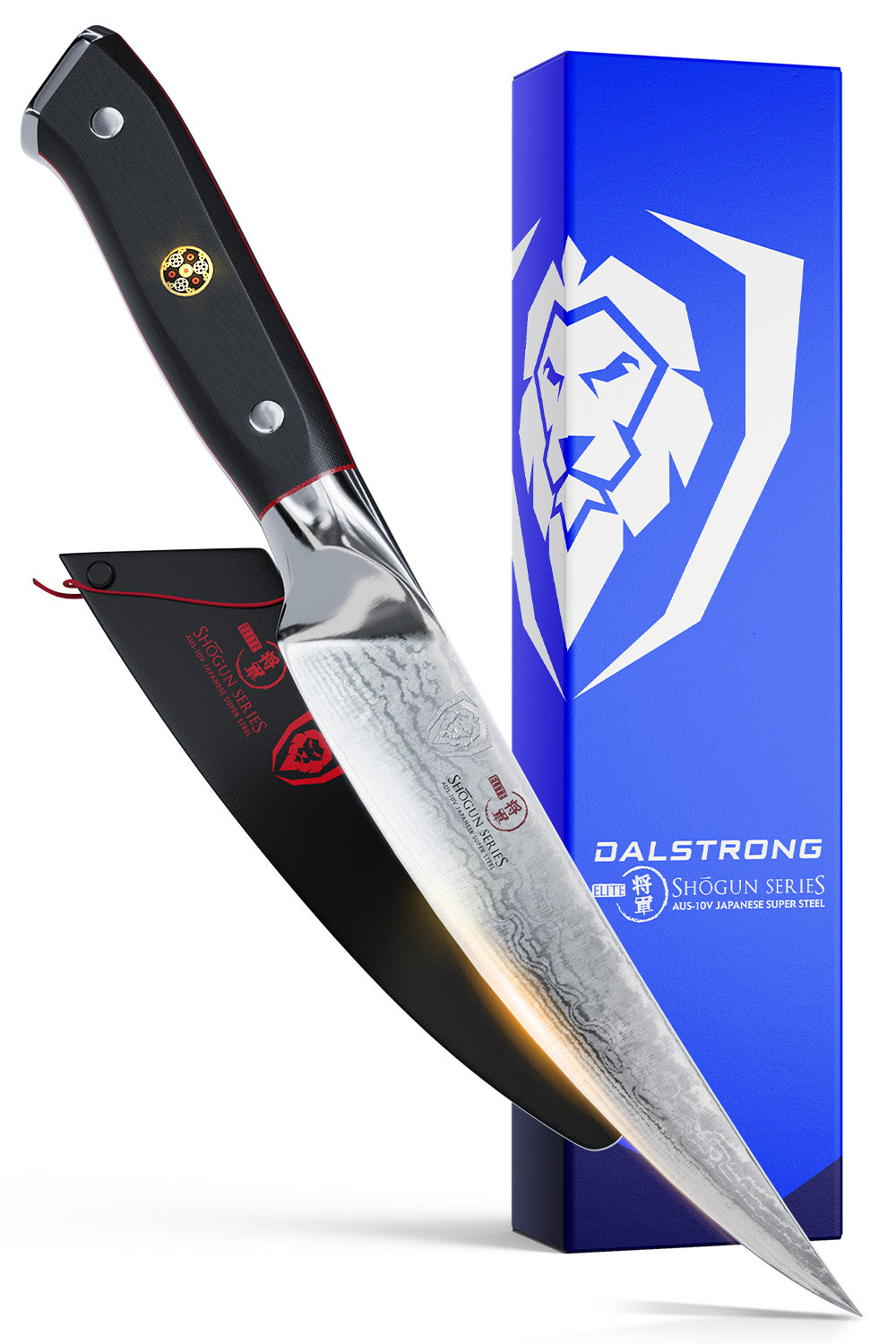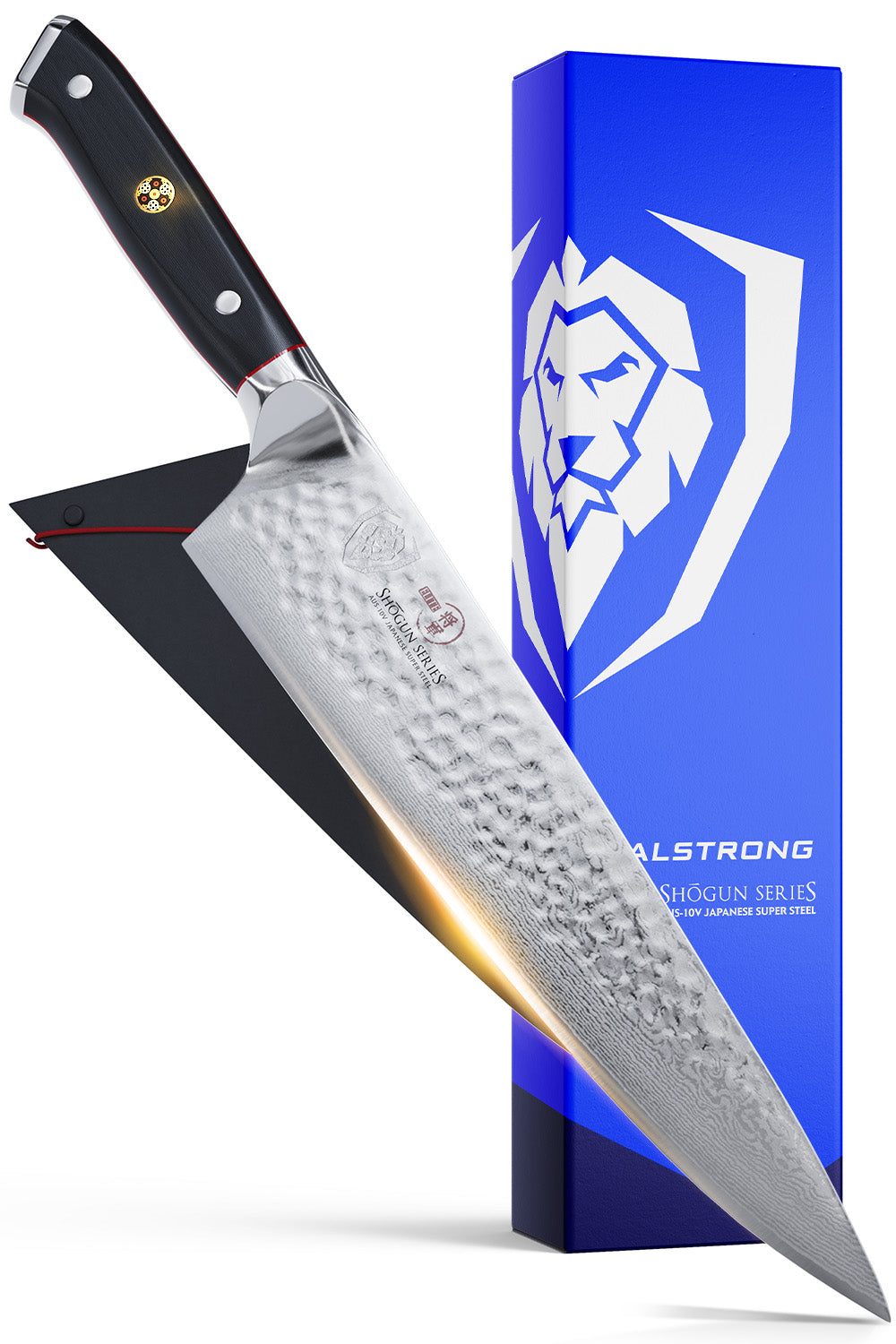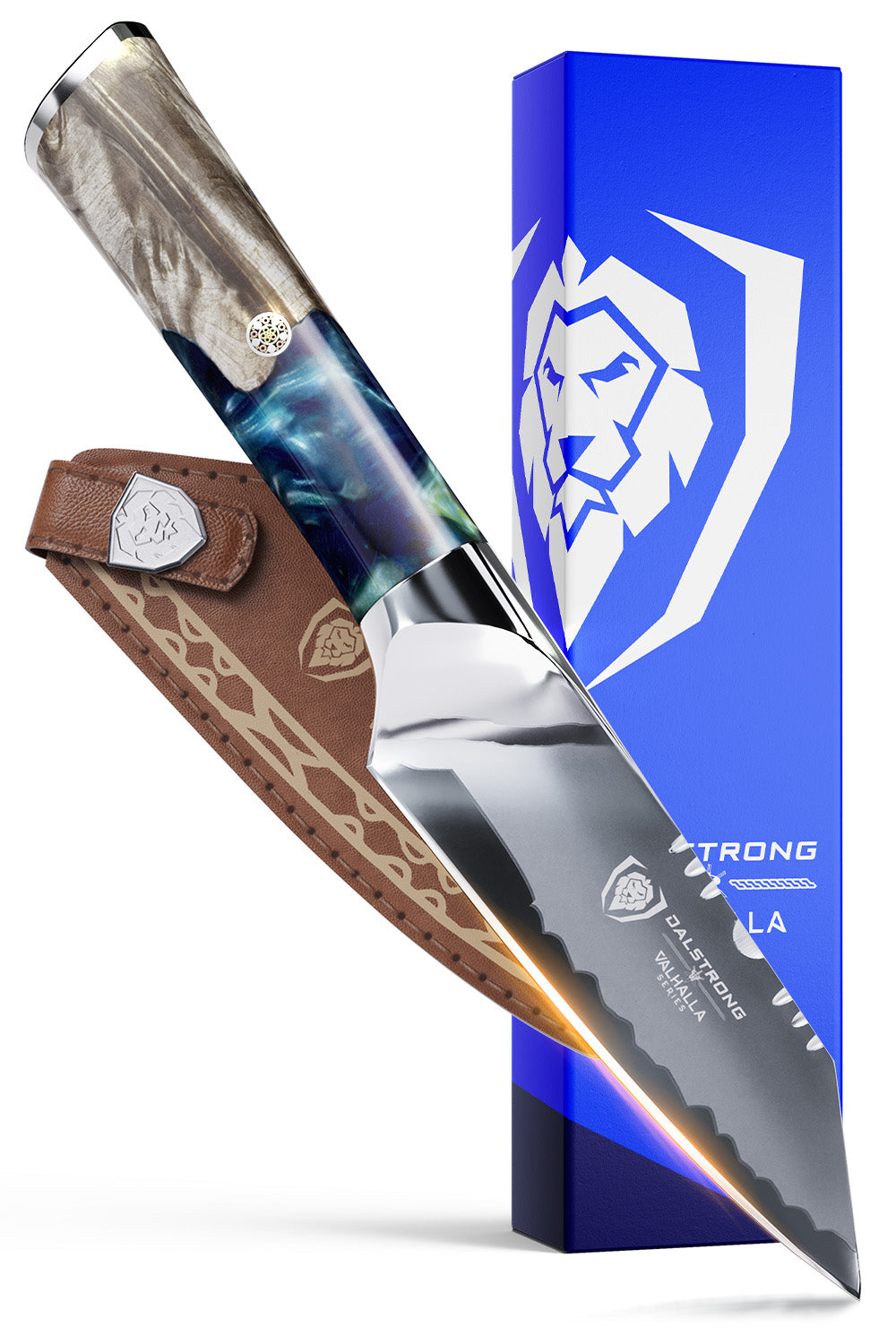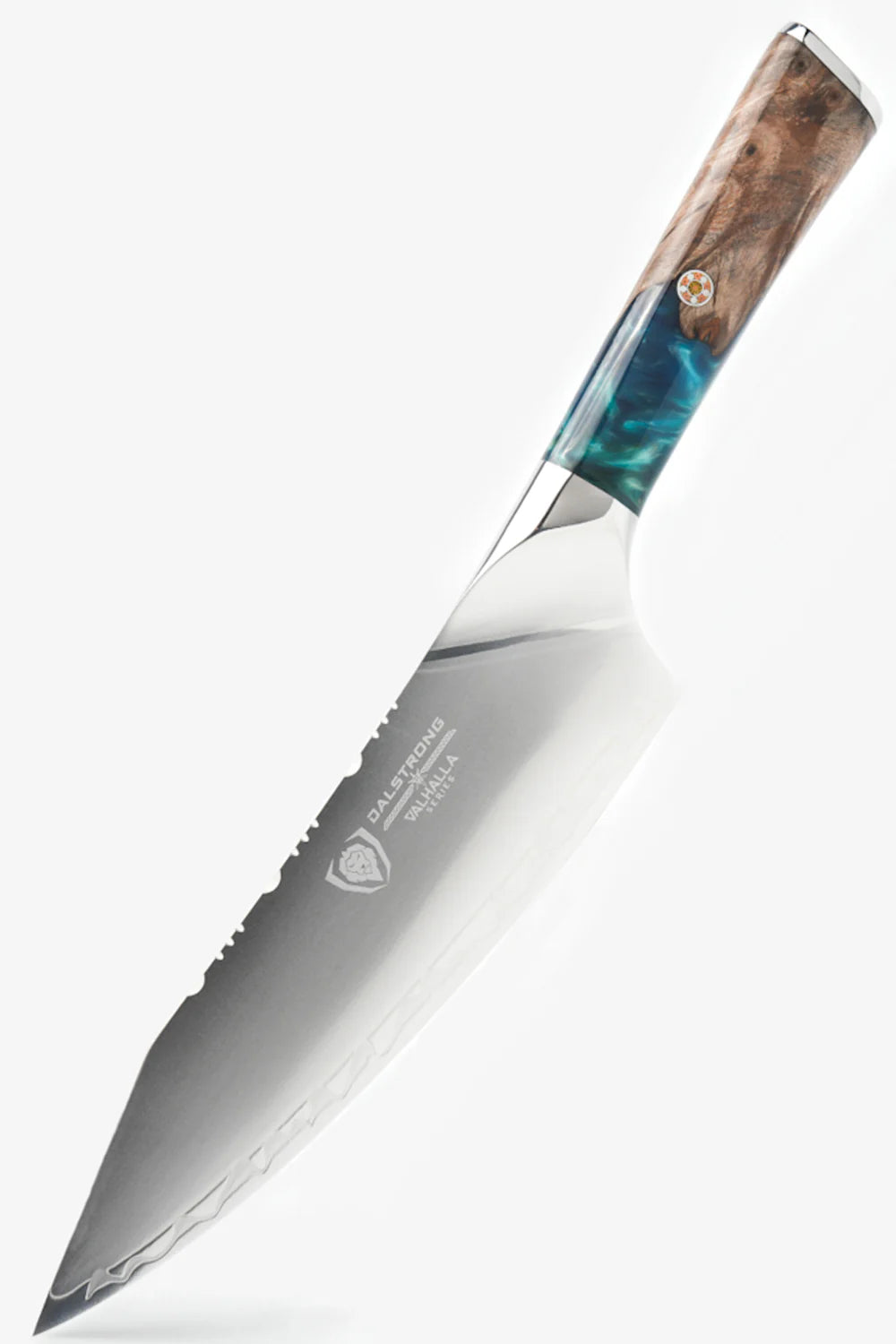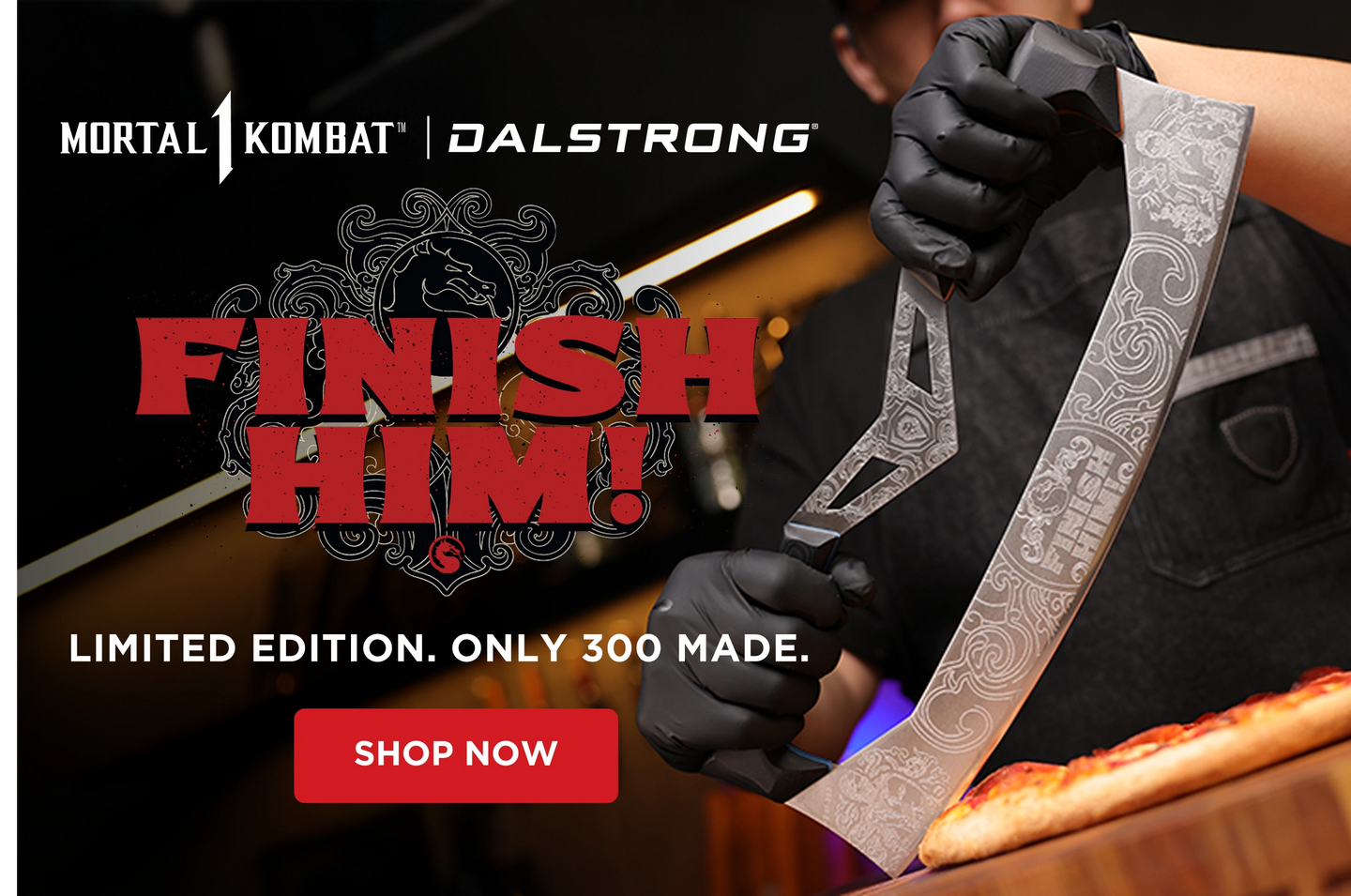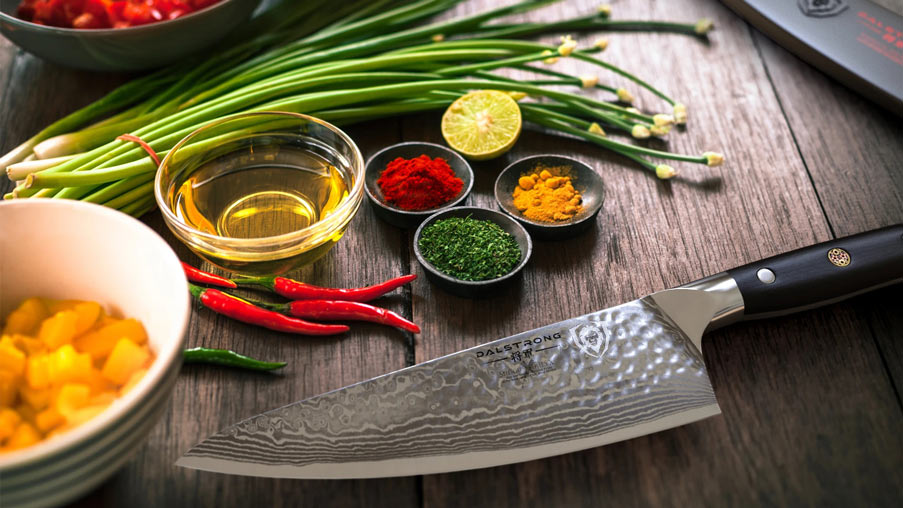
Being a good cook is an art. Culinary art, to be precise.
Understanding this little fact opens doors to a fresh perspective. Chefs have to be artistic and create every meal like it is a masterpiece. And like any other art form, it takes the right tools to excel at cooking.
Twyla Tharp once said, “Art is the only way to run away without leaving home.”
Cooking whether at home or in a restaurant kitchen should not only produce great results but also be enjoyed. See it as a form of escapism from life pressures.
You must have the right utensils to enjoy the process of cooking great meals, including the all-important chef’s knife.
Learn everything you need to know about the chef’s knife right here.
What Does a Chef Knife Look Like?
This culinary tool is razor-sharp and efficient in food preparation.
Chefs would primarily use one to slice and disjoint large cuts of meat.
Today, they are general utility knives. They have found purpose in the everyday kitchen endeavors.
The blade is generally 8 inches in length and 1.5 inches in width. Different models could, however, vary between 6 to 14 inches.
Depending on the model, the blade is straight throughout and then tapers upwards at the tip. It could also curve continuously along the entire cutting edge.
Why do You Need a Chef’s Knife?
Chef’s knives transform your kitchen. You need one because it is the most important culinary tool in your kitchen.
This isn’t to say that other knives aren’t important. It simply means that it’s the knife with the greatest number of uses.
Uses of Chef Knives
Some of its many different uses include:
- Dicing fruits, vegetables, and herbs: This happens quite often when preparing a meal - if not every time. You need a good knife that rolls back and forth with ease. Uniformly chopped vegetables cook faster once in your cookware.
- Slicing meat: When you want to chop large cuts of meat into smaller pieces, your knife comes in handy because of its sharpness.
- Hacking through tiny bones: The best cutting tool to hack through large bone is a butcher knife or a cleaver. For tiny bones, however, the chef’s knife does the job neatly and efficiently.
- Peeling ingredients: This multi-purpose utility knife serves well for all peeling jobs whether it’s for potatoes, raw bananas, carrots, beets, garlic, etc.
How to Properly Use a Chef’s Knife
Knowing how to properly use this culinary tool ensures your safety as its cutting edges can be extremely sharp.
Here’s how to use it right and avoid any accidents.
How to Grip Your Knife
The way you grip this culinary tool determines:
- How long you can use it before getting tired.
- How efficient each of your slices is.
- The uniformity of your meal’s ingredients.
- The odds of accidentally cutting yourself.

Knife in the image: Dalstrong Chef Knife
To ensure a good grip, your index finger should be wrapped around the collar of your knife. The thumb and index should be opposite each other on either side of the blade. As you chop your food, let the remaining fingers curl loosely on the blade.
Try this and notice how relaxed your hand becomes. Avoid gripping the handle too tightly as this makes your fingers grow weary faster.
Where to Place Your Guiding Hand
Proper use of your guiding hand to secure food is with the fingers tented on the food, like a claw. As you work your knife back and forth, the tented position of your guiding hand enables you to shift your fingers backward.
You can practice the correct motion by chopping an onion.
Learn more about how to properly use this knife by watching this tutorial done by Marcus Buris.
What to Look For When Buying a Chef’s Knife
We would fall short if we did not tell you what to look for. Shopping for your kitchen cutlery should be planned and well thought through. You should have in mind the qualities and characteristics that you are looking for in your knife.
Generally, the style, steel and angle will determine the performance of your knife.
For a maneuverable and comfortable knife, look for these features:
- A comfortable handle: The best handle is one that gives you a sort of seamless feeling with holding it in your hands. A knives enthusiast will tell you that a knife is an extension of their hand. Ensure you get a handle that gives a good grip and feels like part of your hand.
- A sturdy knife collar: The knife collar connects the blade to the handle. A good one is firm and it doesn’t shake or move.
- A curved steel blade: While shopping for your knife, ensure you buy one with a curved steel blade. The curve enables smooth back and forth movement while chopping. Sharp steel blades are also longer-lasting than blades made from other materials, meaning these knives can easily be maintained.
- A balanced weight: You want to get a knife that has a good handle-blade weight ratio. Neither part should outweigh the other, otherwise, this will affect your movement and efficiency with it.
Where to Buy Your Very Own Quality Chef’s Knives
At Dalstrong, we strive to inspire you with modern tools that enhance your culinary experience.
You deserve the tag 'master cook' - whether that’s at home or in a restaurant kitchen. We value every little thing that goes the extra mile to place the best products in your hand.
Our collection of chef’s knives provide the best class and quality, at unrivaled prices. You are a culinary artist. Shop for yours today and excel in the culinary art form.

































